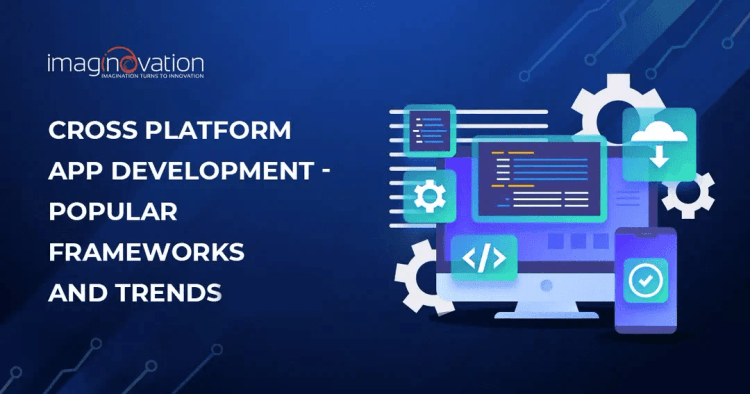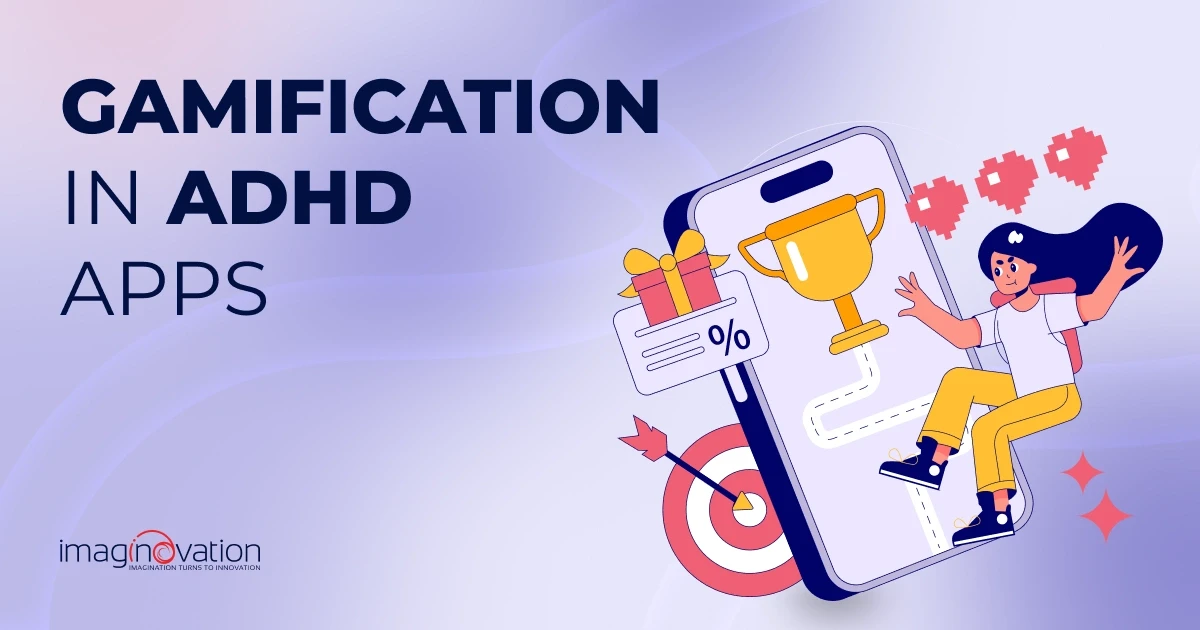Developing a cross-platform mobile app has its own perks. On the development side, it can reduce the cost and time to build the app, while on the business side, it can help improve reach and engagement.
That’s why many businesses are investing in cross-platform mobile applications.
But how are cross-platform apps different from native apps? How are progressive businesses using these mobile applications to improve their business?
In this blog, we will talk about cross-platform apps in detail – what is it, how is it different from a native app, what benefits it brings, which frameworks you can use for its development, and the upcoming trends to look for.
Let’s dive in!
What is Cross-Platform App Development?
Cross-platform application development means creating a single application for multiple operating systems instead of building separate apps for each different platform.
Often when businesses plan to build an app, they wish to reach a large group of audience. This can be achieved with a cross-platform app since it is compatible with more than one operating system. Typically, this means having a single app for Android and iOS devices and sometimes Windows and other platforms too.
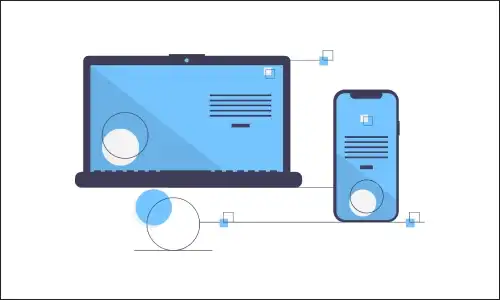
So, why choose cross-platform apps over native apps?
One of the main reasons why it’s not a good idea to build multiple native apps for multiple platforms is the additional budget and resources. The codebase used by either set of developers – Android, iOS, and others is non-sharable. That means your company will need to maintain multiple codebases.
Cross-platform development gets you a single app in multi-platform app stores with a single code base, limited development resources, quicker launch, less budget, and broader audience reach!
Do you Know –
- Android and iOS dominate the mobile app industry with 3.48 million apps at Google Play Store and 2.22 million iOS apps at the Apple App Store. But targeting any single operating system for app development is not a worthy decision for any business; that’s why cross-platform is the need of the hour.
- While there are many different cross-platform mobile frameworks available, 42% of the software developers use Flutter, followed by React Native framework used by 38% of the developers.
Also Read: Android vs iPhone Users: What You Need to Know Before Developing A Mobile App?
Difference Between Native and Cross-Platform
Native or cross-platform? That’s an unending debate.
However, the choice of going with either depends on your project requirements and application use cases.
Native app development involves building an application specific to a single platform (either iOS, Android, or Windows). While they are more costly to develop, they can be the best choice when it comes to app performance and user experience.
Cross-platform apps, on the other hand, are easy and quick to build but take more effort to deliver an equivalent user experience on the respective platform.
Let's check the comparison table to see how both differ.
| Comparison Parameter | Native Apps | Cross-Platform Apps |
| Development Cost | High | Relatively low |
| Development Time | More, the app codes have to be written from scratch for individual platforms. | Less, as single code is used for multiple platforms. |
| TTM – Time to Market | Long, as you need to build separate apps for each platform. | Short, because of less development time. |
| Code Usability | Code written for one platform cannot be used for another. | Based on the idea of 'write once, run everywhere, developers can use a single codebase on multiple platforms. |
| Updates and maintenance | Challenging – Maintaining separate versions for separate platforms isn’t easy. You may face difficulty in collaborating amongst teams or in rolling out a new feature. | Easy – These days it’s common to release frequent app updates. With cross-platform apps, this becomes hassle-free as there are neither multiple development teams nor multiple code bases for different app versions. |
| Performance | Since native app developers tailor the app specifically for a specific platform, strictly following the quality guidelines, these apps provide excellent UX and seamless performance. | They are high on performance, but users sometimes experience lags & hardware compatibility issues. It is because cross-platform app developers cannot strictly follow one platform’s guidelines and ignore the other. Trying to offer a unified experience through all platforms affects the app performance. |
| Device Access | Platform SDK ensures the app’s access to the device’s API without any problem. | Cross-platform apps do not assure access to APIs of all devices. |
| Customer reach | By developing your app for one platform, you may lose a big chunk of potential app users. | Broader user base as you can promote one app through multiple platforms. |
Top 5 Popular Frameworks in Cross-Platform App Development
There are many excellent Cross-Platform mobile and web app development frameworks out there that can help build creative and state-of-the-art applications.
Let’s talk about the five most popular cross-platform app development frameworks.
1. Flutter
First released by Google in May 2017, Flutter is the youngest and most popular cross-platform app development framework available today. It is a free and open-source framework and is an excellent choice for building mobile apps for both iOS and Android.

Its popularity is clearly seen in a Developer Survey where Flutter has found its place among the top 3 most loved frameworks.
Moreover, the applications built using Flutter delivers high performance and excellent quality.
The developers love Flutter’s simple UI, which offers a powerful way to build applications using Google’s coding language, Dart. In addition, Flutter is easy to handle - whether you are installing, setting up, or accessing the framework.
Flutter comes with a plethora of widgets that support gestures and animations.
Here’s a list of Flutter features that make it a brilliant choice for cross-platform mobile app development.
- Flutter promotes portable GPUs that render UI power, helping the developers work on the latest interfaces.
- Initiates a fast development process, making it cost-effective and just the right choice to launch a Minimum Viable Product (MVP).
- Flutter’s hot reload features allow developers to modify the app in the backend without any need to save the file. The developers can see those modifications in real time.
- Dart is an excellent tool for writing structured programming codes.
- Along with Android and iOS, the developers can build applications for the Furchisa platform with Flutter.
- Mobile apps built on the Flutter framework show better performance than apps built on other cross-platform app frameworks.
- Flutter is not only a mobile solution – In May 2019, Google extended its support from Flutter for desktop, mobile, embedded, and web apps from the same codebase.
2. React Native
React Native is another leading cross-platform app framework. Facebook launched React Native in 2015, and since then, its developer community is growing fast. It is based on JavaScript and helps the developers give a native-like feel to their apps.

The biggest USP of this cross-platform app development framework is that it combines the best features of JavaScript and React.JS. It gives developers the luxury of creating some modules of your application using Java, Swift, and Objective-C language.
Here’s why React Native is popular amongst the developer community.
- Just like Flutter, React Native’s Hot Reloading feature enables you to monitor modifications made in code within seconds without having to save them first.
- Up to 80 percent of the React Native codebase can be shared across platforms.
- It is compatible with most of the leading third-party plugins.
- React Native focuses on UI and enables the developers to create a highly responsive UI interface
Also Read: Flutter vs. React Native: Comparing Features, Pros & Cons, and an Outlook for 2025 & Beyond
3. Xamarin
Xamarin was launched in 2011 as an independent cross-platform application development framework. But later, Microsoft acquired it, making it more for enterprises.
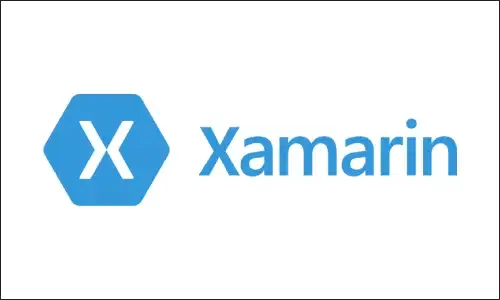
It is a streamlined open-source framework specifically used to build Android, iOS, and Windows apps by using C# and .Net libraries. With Xamarin, developers can use 90 percent of the same code to build apps for different platforms.
Xamarin is a great cross-platform app development framework because –
- Xamarin-based apps are developed with the help of the C# library. This way, developers can leverage modern programming languages such as Objective-C and Java to build and modify the apps.
- It offers easy linking with native libraries, which ensures smooth app customization and native-like functionality.
- It is easy to use because the developers just need to know .NET and C# in order to use it.
- It witnesses fewer run-time errors during app development as it offers compile-time checking.
- Xamarin has a large community of app developers.
- Xamarin eliminates hardware compatibility issues and has the capability to work with the most common devices across all platforms.
Also Read: Xamarin vs. React Native: Which One Should You Choose for Mobile App Development in 2025?
4. Ionic
Ionic framework is a leading open-source UI toolkit that empowers developers to build high-performance mobile apps, desktop apps, and PWAs – progressive web apps.
The framework allows the use of web technologies such as HTML, CSS, and JavaScript. It is based on AngularJS.
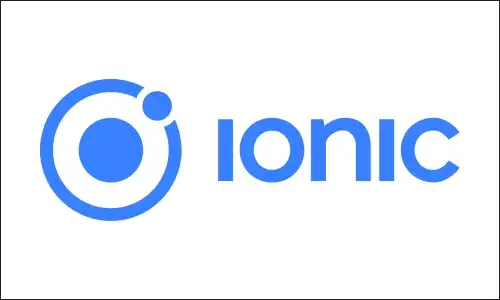
It uses Cordova wrappers for native elements of the app. The USP of Ionic apps is that they run in a special shell on your mobile phone devices. So, for example, the Android applications run on WebView and iOS on UIWebView.
You’ll find it easy to build hybrid apps for mobile devices with the help of the Ionic framework. You can make eye-catchy designs, and slick animations and add all the necessary native mobile components required to make your application stand out in the crowd. Because of Ionic’s ability to develop native-like apps, it is also preferred to build PWAs.
Here’s why you should choose the Ionic framework for building a cross-platform application.
- It offers many ready-to-use UI components.
- There are many plugins available to use the native features on a smartphone.
- The ionic framework is specifically meant for mobile OS as it is based on the SAAS UI framework.
- The developers can change the code structure according to their requirements.
- The Ionic apps work well on different platforms, be it iOS, Android, or Windows.
Also Read: Ionic vs. Flutter: Which One Should You Choose for Mobile App Development and Why?
5. PhoneGap
PhoneGap enables mobile application developers to code in a smooth and hassle-free manner. With it, you get the flexibility to use different languages without any hardware restrictions.
PhoneGap is an open-source framework, which was first developed in 2005 by Nitobi Software. In 2011, Adobe purchased PhoneGap. Now, PhoneGap is known as Cordova and offers cloud-based solutions to craft mobile applications directly in the platform.

PhoneGap’s USP is that it has a powerful backend. Go for PhoneGap if you are looking to build simple applications without complex native features. It is compatible with Android, iOS, Windows, and Electron platforms.
You can get access to essential Native APIs with this framework so that your app can use native features like camera, geolocation, accelerometer, contacts, and others.
You should consider using PhoneGap because –
- Apps built through PhoneGap run well on all the leading mobile OS platforms showing minimal differences.
- It offers a faster development process while reducing the app developers’ efforts.
- It offers mobile app development with JavaScript, HTML, CSS, Java, Objective-C, C#, and C++.
- It has a vast collection of UI libraries to help improve the viewing experience for different users.
- It has a large community base with adequate support.
Top 5 Upcoming Trends in Cross-Platform App Development
The future of cross-platform app development looks brighter than ever with these upcoming innovative trends.
Let's check out the 5 topmost trends that are ruling the industry in 2025.
1. Augmented Reality & Virtual Reality
AR and VR are the most promising and trendsetting technologies you must use in your apps today.
AR dramatically augments the ways a mobile app helps with everyday activities like searching for information and shopping. On the other hand, VR lets you experience what it's like to go anywhere — from a music concert to distant planets to the deep sea.
Pokemon Go, Instagram AR filters, L’Oréal Makeup App, Snapchat Stories, Google Earth VR, and IKEA mobile app are some examples where we can see the use of these technologies.
Today, apps built for all industries and businesses wish for a great app user experience, which AR and VR technologies ensure.
Therefore, do not forget to tick AR and VR technology box while building your new cross-platform app.
2. Engage your users with chatbots
Chatbots are no longer add-on frill elements for the apps. App users today are interested in interacting with apps. Whether for conversational marketing, 24x7 support, or real-time information sharing, both businesses and customers look for chatbots in the apps.
Your cross-platform apps won’t be complete without chatbots to keep your users engaged.
The chatbot in your app can be used to do many things – share tips with the customers, book appointments, route the customers for follow-ups, and even solve your customer's queries any time of the day.
What’s more, you can even make it multi-lingual!
No matter what kind of business you do, just think of innovative ways to introduce chatbots to your application for better customer engagement and reach.
3. Integration with Wearables
Wearable technology is making its mark globally. From smartwatches to smart jackets, body sensors, fitness trackers, and smart glasses, wearables are the future.
What’s great about wearables is that you can communicate with them through your smartphone. And that’s why today, it has become one of the most popular mobile app development trends.
Its popularity can be seen in a report by Statista, which confirms the total number of connected wearables has more than doubled since, from 325 million in 2016 to 722 million in 2019. Furthermore, the number of wearables is expected to cross one billion by 2025.
From tracking information to improving productivity, there are endless possibilities that a wearable integrated app can bring.
4. Beacons Technology
Although Beacons technology is not new, in 2025, it is making a reappearance as a better version of itself.
You can use it to detect app users’ proximity and allow the app to send notifications, personalized messages, promotional offers, and other things.
There is no industry that does not benefit from this technology.
5. Mobile Security
Staying only focused on embedding unique features and technologies into your apps can make you forget about its security.
It is becoming increasingly important to work on your application’s security.
Be vigilant! – Your app could be storing or unintentionally leaking sensitive data that others could read. Or maybe it could be implementing poor authorization checks. Or, the data encryption methods used in your app are vulnerable to breaches.
So, it would be best if you made security the topmost priority. Maintain a separate budget for cybersecurity and ensure you adhere to the latest data protection laws.
Are There Any Other Reasons to Choose Cross-Platform App Development?
Right from startups to established enterprises, cross-platform applications bring multiple benefits. They are also:
Easy to Maintain
It is undoubtedly easier to make updates in a cross-platform app codebase. That’s because you don’t need to make updates and corrections in multiple codebases (like in the case of native apps). Instead, you just fix the common codebase, thus saving effort, time, and money.
Reusable code
This is the biggest USP of developing a cross-platform app. The code once created for a platform can be used again and again here. Instead of developing different codes for every platform, a single code can be reused. This saves time and resources, also eliminating any repetitions.
Flawless Cloud Integration
Because of a single code source, it is easy to integrate cross-platform apps with the cloud platform. It thus provides better compatibility and assistance in maintaining applications in the cloud.
Develop A Powerful Cross Platform Application with Imaginovation
Cross-platform app development offers an amazing alternative to traditional, native application development. However, you need a team of experienced developers who have knowledge of advanced frameworks and tools.
If you’re looking to build a cross-platform application for your business, get in touch with us.
Imaginovation is an award-winning web and mobile app development company with vast experience crafting remarkable digital success stories for diverse companies.
Let's talk.
Ready to build an app, but not sure where to start?
We've got you covered. Click the button below to get started.

